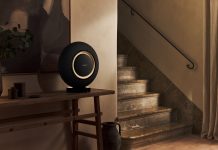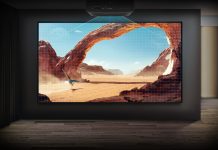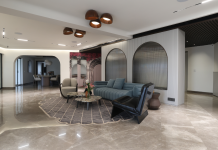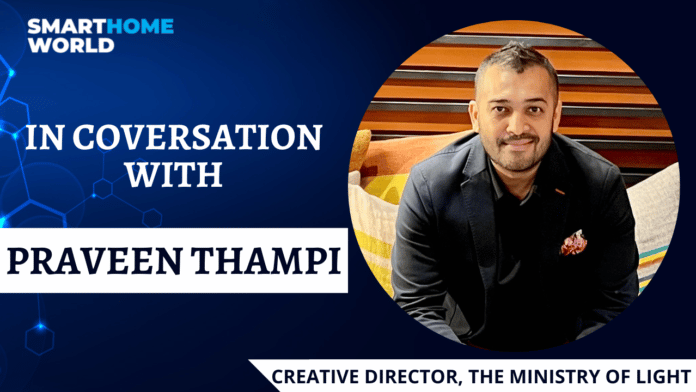
Praveen Thampi, Creative Director, The Ministry of Light highlights the need for True Sky Circadian Lighting System and future trends and innovations in the lighting industry.
What are the advantages of using smart lighting in homes?
One of the most common forms of smart lighting for homes is dimming. This allows users to adjust the brightness of the lighting to suit different occasions or set the required mood. These scenes can be anything the user wants them to be, from a specific kind of scenario during any festivity or celebration to creating a right ambience for a party. With a smart lighting system, a user can easily program and recall different scenes depending on the activity that will take place in a certain area.
Home environments with smart lighting have been shown to boost residents’ well-being. Having abundant natural light is ideal for a comfortable home. However, getting adequate sunlight isn’t always practically achievable in major metros cluttered with buildings. That’s why it’s helpful to have an artificial lighting system in home that provide illumination to Replicate the Natural Sunlight. To put it another way, this aids in maintaining our internal clocks in sync with the sunlight and helps properly regulate various Human hormonal secretions.
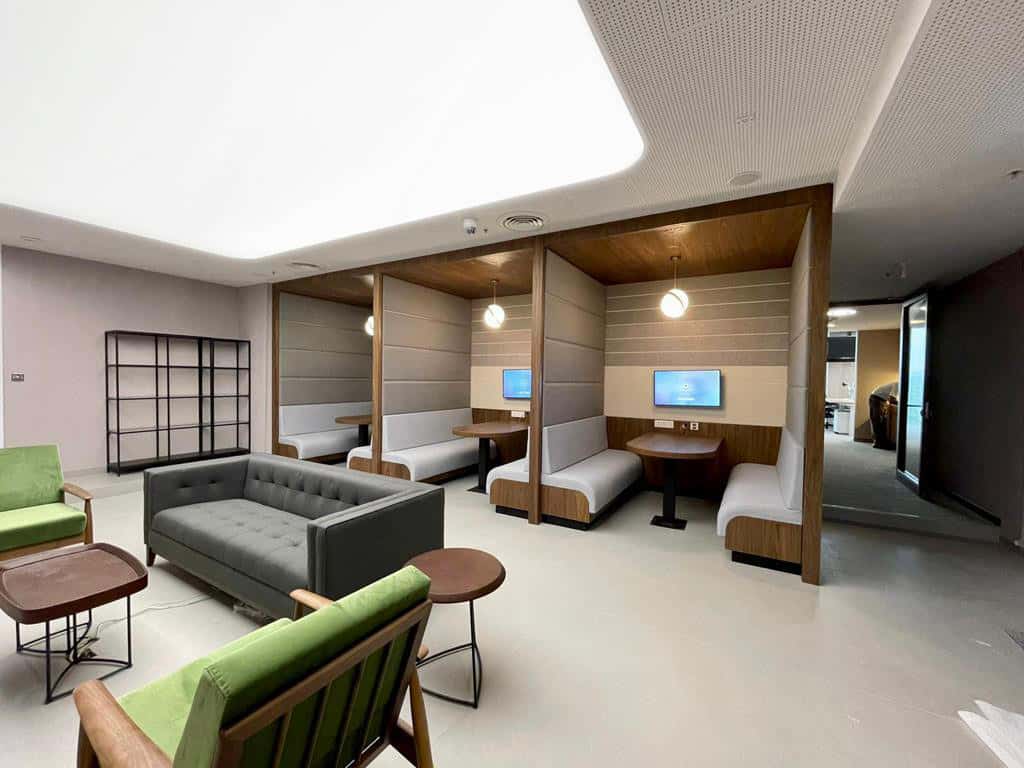
How does smart lighting play an important role in our workplaces?
In today’s world, people spend a lot of time under white light during the day and at night. Inside office buildings, so commercial spaces must have smart lighting. People are not exposed to natural light in an office setting. They are always exposed to a fixed colour temperature light, but the wavelength and colour temperature of natural sunlight changes every minute of the day, which the human brain keeps track of. As a result, our bodies are unable to keep track of these variations in light and are unable to respond appropriately.
This is especially important for employees working the night shift. Because we are Diurnal beings and life on earth is designed so that we wake up when the sun is up and go to sleep when the sun is down. Night shift employees face a problem that we call de-synchronisation of the biological clock/circadian rhythm.
Long-term effects of sitting under a fixed colour temperature include lifestyle disorders such as high blood pressure, diabetes, lower concentration, etc. Smart lighting in an office helps facilitate natural sunlight in the office space. It ensures that the circadian cycle works correctly and that the people working in that space have no adverse effects.
For example, in Northern Europe & Scandinavian countries, many people suffer from SADS – Seasonally affective disorders. Circadian lighting in such areas helps trick the brain and fast-tracks it by twelve hours and makes the brain feel like it is daytime. This helps them work as efficiently as possible without worrying about any disorders.
How does smart lighting affect the aesthetics of a space?
When it comes to smart lighting and aesthetics, we do not compromise in any way. One of the practices prevalent in the market is where some integrators/designers go for some gimmicks in terms of smart lighting. When it comes to Circadian/Tuneable white Lighting, the type of luminaries we use in terms of ‘Look & Feel‘ do not change, but we only change the type of LEDs and Control system used inside them.
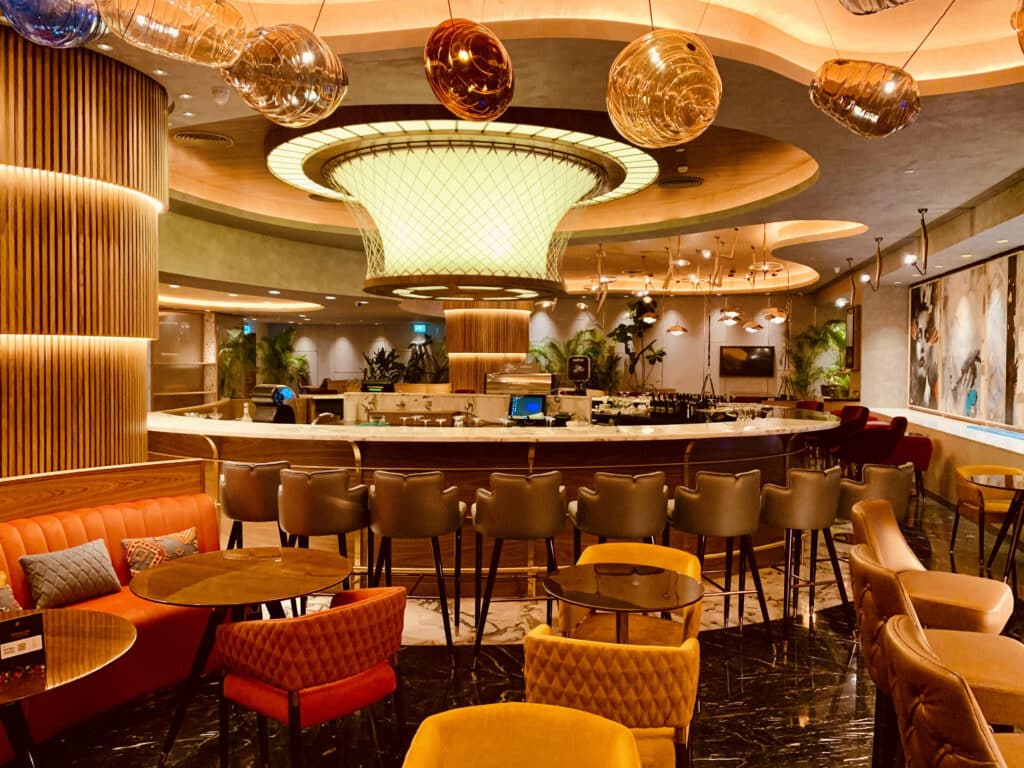
Rather than maintaining a constant colour temperature, we use two sets of LEDs to adjust the colour temperature and Intensity based on colour temperatures emitted by the natural sunlight which is in sync with the Human circadian rhythm and user preferences. In terms of aesthetics, a tunable white lighting system will enhance the room better, as some colours are more enhanced at certain colour temperatures than others. Similarly, specific colours are disguised by using different colour temperatures. So overall, the space transforms drastically as the day goes by. Certain colours not visible in the morning are better enhanced in the evening because of the ever-changing colour temperature.
What is the True Sky Circadian Lighting System?
The True Sky Circadian Lighting System is where you have a suspended, sleek Dual optics Luminaire, where the upward component throws light into the ceiling and is tunable between 2000K and 8000K. The light coming from the downward component is varying only between 3500K-5500K, which simulates the natural daylight. This two-way lighting system is a perfect replication of the natural sky & daylight.
The colour temperature of the upward component of the suspended luminaire changes from blue to orange as the day progresses. This approach is based on how the sky changes colour while the sunlight we perceive remains constant between 3500K-5000K. We recently implemented this system at one of the Google Campuses in Bengaluru.
How vital is working with a system integrator on a lighting project?
At The Ministry of Light, we design the entire lighting system including the Lighting Management system completely In-house. The reason why we do this is that we are a bunch of tech-savvy people. Apart from lighting, we do a lot of lighting automation, and I myself am a technology consultant for a couple of large lighting automation companies.
I try to stay on the cutting edge of technology and use that in my projects, so I don’t usually need a system integrator. A system integrator might come into the picture if the client tries to integrate the lighting management system with other automation systems. Still, system integrators don’t come into play much from a smart lighting installation perspective.
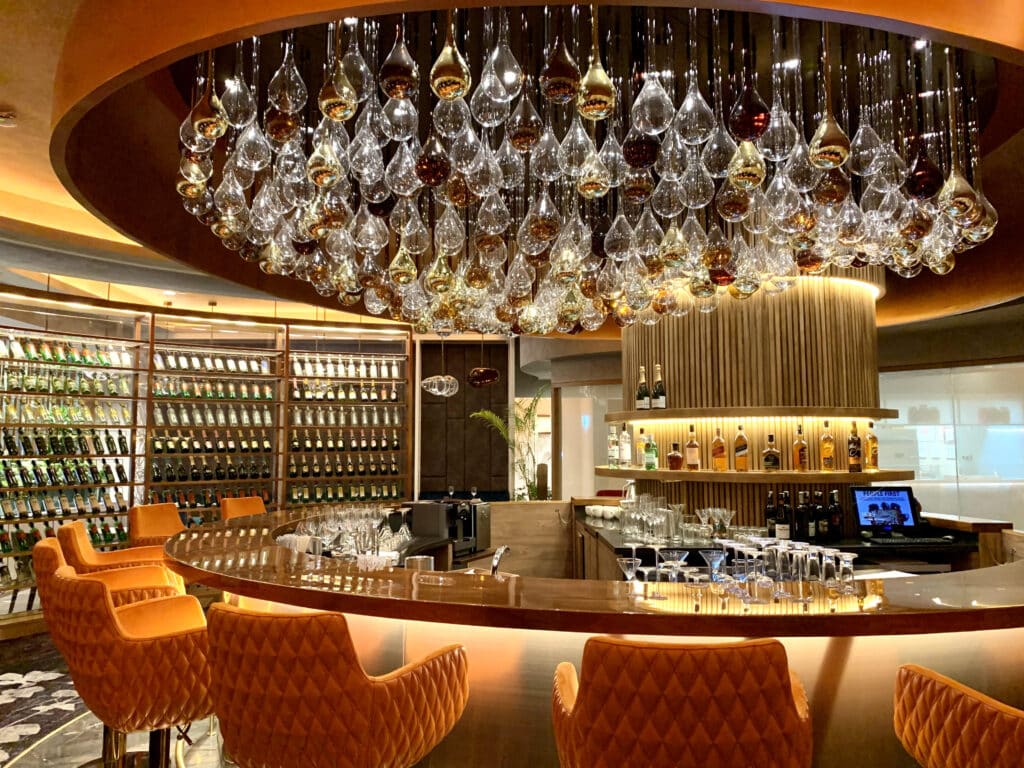
System integrators do quite a good job of integrating a home automation system. But when it comes to commercial spaces, the role of an integrator only comes into play if there is a sophisticated conferencing system or an AV system that needs to be integrated with the lighting management system.
In my experience, there are some lighting designers who only focus on the Architectural/Interior design aspect of lighting, so in such cases, the system integrator plays a larger role in plugging the gap between the lighting designer and the electrical consultant.
What are the primary factors that you consider while ideating a design pattern? Or what all needs to be kept in mind while ideating a design theme or pattern for a particular area?
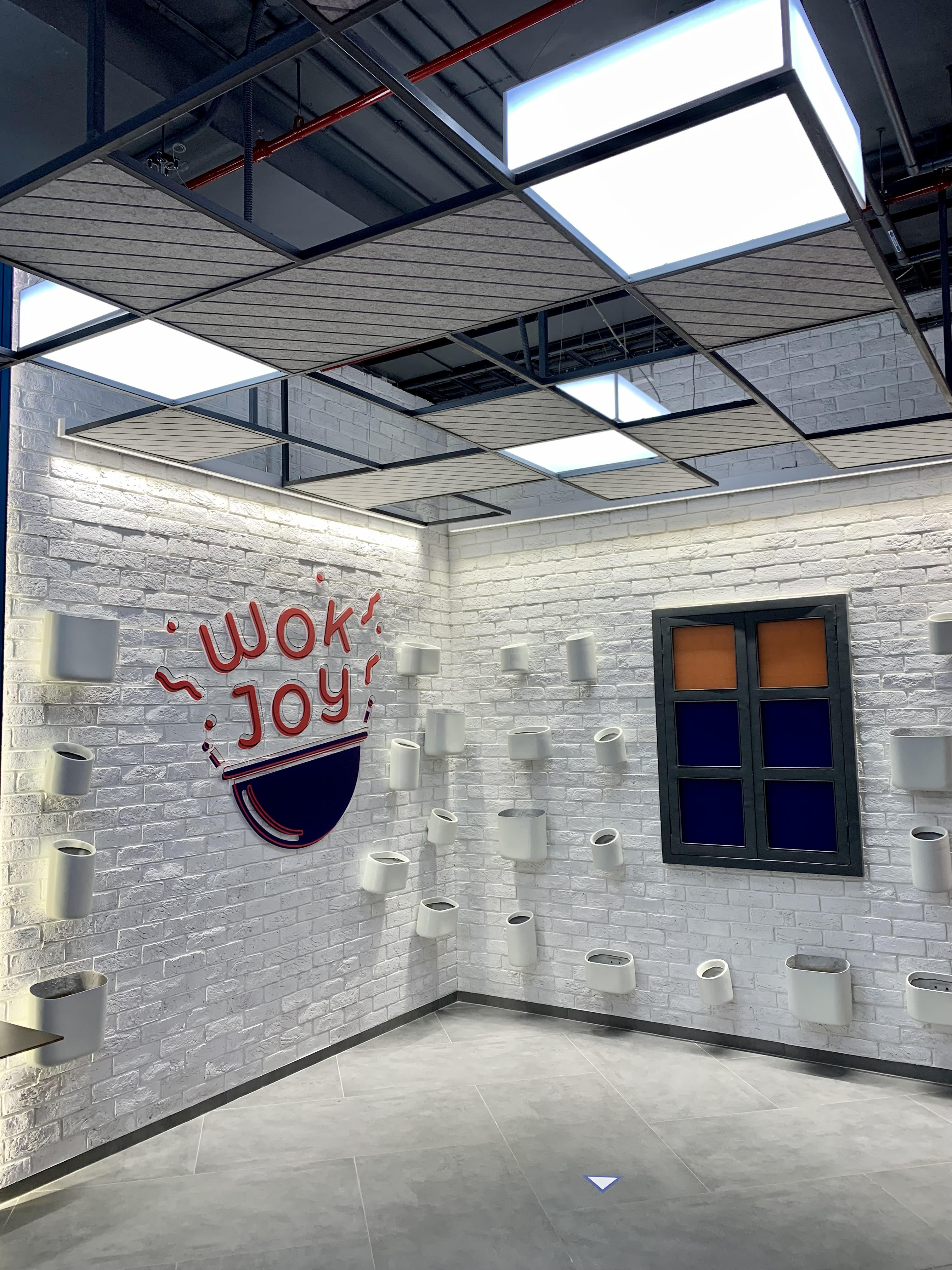
We first begin by understanding the functionality of the space and the client’s requirements based on which we make a reference to what kind of project we are working on. So we prepare a questionnaire and propose a design basis report to the client. This report is based on the latest technologies and standards available in the market along with a budgetary cost. This slab-based report is then used to make recommendations to the client to fit their requirements. At this stage, we also make a note of what will be the usage of the space as well as at what time the systems will be used the most. So here we gather a lot of pertinent information that becomes the basis for all the design and technology decisions.
Next, we decide on the standards and technologies that will be implemented in the project. This includes whether we are going for motorised blinds, a full-fledged Lighting Management System or Human-Centric lighting/Circadian Lighting, a standard On/Off-sensor-based system, or a Standalone DALI Smart Lighting Management System with HCL or BMS integration. So we need to consider almost 15 different parameters here, and these parameters evolve and change on every project.
Next, we consider the architect’s design and understand the look and feel of the space. Here, we suggest to our clients how to modify or tweak the system to fit with the design principles. By this phase, the overall look and feel of the project and the detailed design charts are now complete and ready for the client’s approval.
Finally, we process the BOQ with specifications and prepare the tender. Upon the client’s approval, we proceed with bringing in the suppliers and contractors on board and as part of this process, we prepare a “Techno-Commercial Comparative”, based on which the client places purchase orders and On-boards the Suppliers/Contractors.
How do you provide the after-sales service for Lighting Management Systems?
The lighting management systems available today are mostly cloud-based. These systems are quite flexible, and almost all of the after-sales services can be done over the internet. Once a project is done, we give the client a “Lighting Control System Logic Document” that shows them how to use the system in each room and its different functionalities and scenes. It helps the user understand the whole system and navigate through it.
If the user cannot solve a certain problem and needs any re-programming, the lighting management system supplier who installed the system can do the re-programming remotely through the Cloud or send a local representative to the site.
What is the biggest innovation in the lighting sector?
It was the advent of LEDs that changed the lighting industry. Before that, there were only the basic Edison Bulb and halogen bulbs, which had been around for over 100 years, with few advancements like fluorescent lamps, high intensity, discharge lamps, metal halides, electro-magnetic lamps etc. Post-2005, a lot of advances have been made in the lighting sector with LEDs taking over the entire lighting industry. Though the principles of lighting controls have remained almost the same since their inception, they have now become smarter, more flexible and versatile and can do a lot more than just controlling lights.
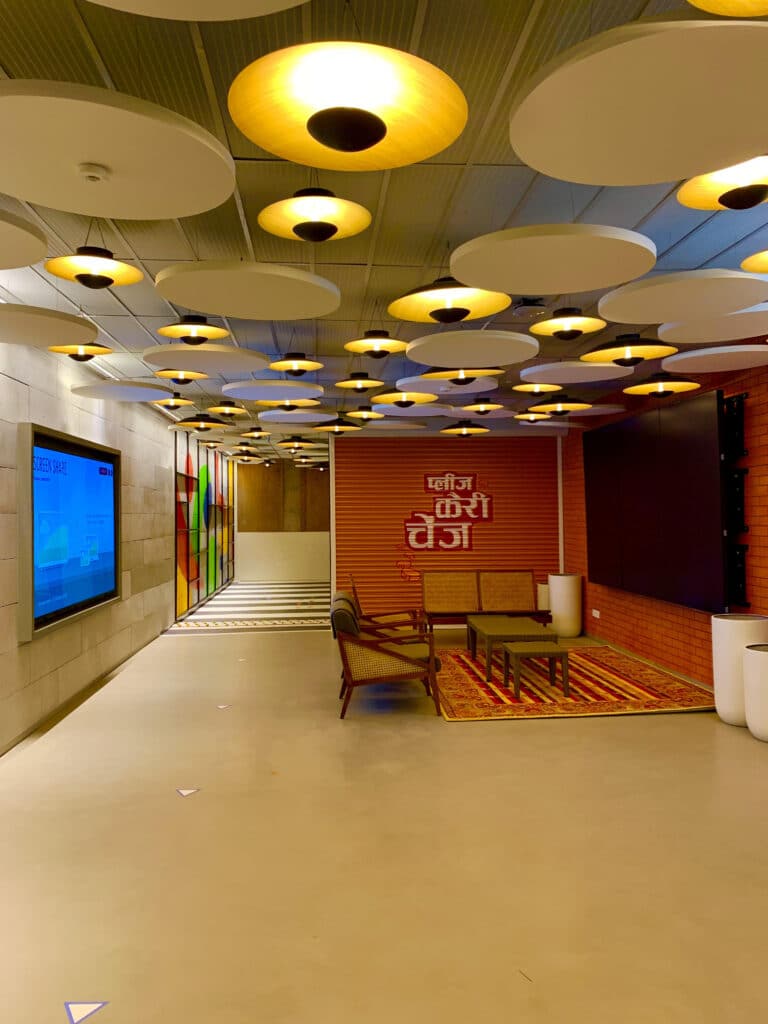
They are able to process a lot of data and provide users with more accurate information. These controllers are much more capable than their predecessors in handling inputs from multiple sensors, processing outputs to multiple Luminaires & feed that data very efficiently to the Building Management system simultaneously. This in conjunction with IoT systems can be used to fine-tune HAVC Systems and several other services in a large commercial project, reaching their optimal levels of performance.
Smart Lighting protocols have evolved to make things easier, such as the Dali 2.0. So in terms of lighting itself, there have been a lot of changes and innovations, but lighting controls and smart lighting have evolved over a period of time rather than having drastically changed or innovated. There have been many innovative platforms that have been developed, which were revolutionary, but unfortunately, none became popular due to various reasons.
How do you foresee the future of the smart lighting industry?
New technologies are coming in daily, such as the Wireless Dali system, which is set to launch in less than six months which will be a game changer. In the next couple of years, there will be a major transition to wireless technology.
Standardization in terms of Protocols in the Industry in terms of Smart home products with Matter and Commercial segment products with Dali-2 Standards, will be a game changer in the industry.




